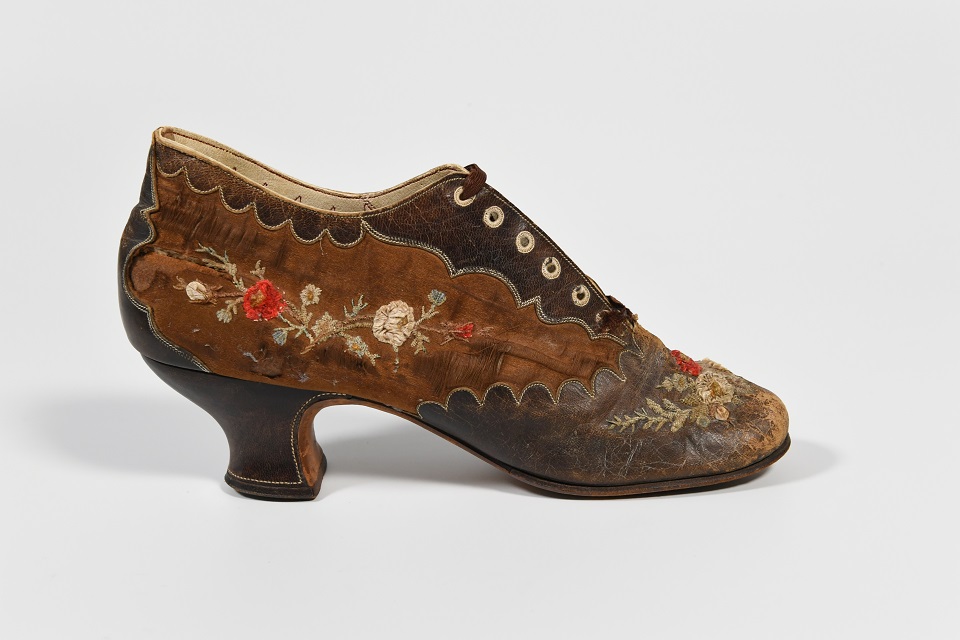The concealed revealed
How to look after your concealed shoe

Women's silk and leather lace shoe. Designed by F. Pinet, 1880s. Found hidden in the chimney breast of an old manor house in Priors Hardwick, Warwickshire.
How to look after your find
Having found a concealed shoe you will probably want to try and make sure that it does not deteriorate. While no objects can be expected to last forever, there are some basic steps which will ensure that your concealed shoe should survive as long as possible. To prolong the life of your concealed shoe, keep it in a stable environment, away from strong light, and free from dust and intruders.
Temperature
The most important step in preserving your shoe is to keep it at as stable temperature as possible. Extreme fluctuation in temperature will mean that your shoe will expand and contract. This will put a lot of pressure on the materials the shoe is made of and will eventually result in cracking.
Over the many years your shoe has been hidden it will probably have reached what is known as an equilibrium. This means that the shoe will have adjusted itself to the temperature of the place where it was hidden. If possible this equilibrium should be maintained whether warm or cold. If you are not sure of the general temperature where the shoe was hidden do not worry. The main thing to remember is that the shoe is kept at a stable temperature.
Humidity
Most concealed shoes have dried out and if they are made of leather, will have gone hard. If the shoes have been used to dry conditions it is important that you do not expose them to damp or condensation. In the worst cases, mould can even start to grow. However, it is also important to avoid much drier conditions than the shoes have been used to, as further drying out could lead to cracking. As with the temperature, moderation and stability are the things to remember about humidity.
Light
Although concealed shoes are usually fairly resistant, all light is damaging to objects in the long term. Keep your concealed shoe well away from strong light or direct sunlight or better still in a box.
Pest intruders
Watch out for problems with intruders! There are some insects and pests, which might regard your concealed shoe as a meal or home. For example, woodworm may attack shoes which are made from wood, or moth might attack shoes made from textiles. If you see any signs of infestation contact a museum for advice.
Cleaning
You may think that your shoe looks rather dirty, but the dirt on your shoe may be part of its history. For example, shoes which are muddy show that they were worn outside, so think carefully about whether you want to remove any dirt. If the shoe is dusty then this can be brushed off, very carefully, with a soft brush. If you wish to go to the expense of having your shoe professionally conserved, the museum can provide advice.
Boxing
Your concealed shoe will survive longer if it is kept away from dust, which is abrasive. If possible keep it in a box. You might also consider getting some ‘acid free’ tissue paper as padding. This will not only protect your shoe from any acids which might be in the box, but will also cushion the shoe and help support it.
